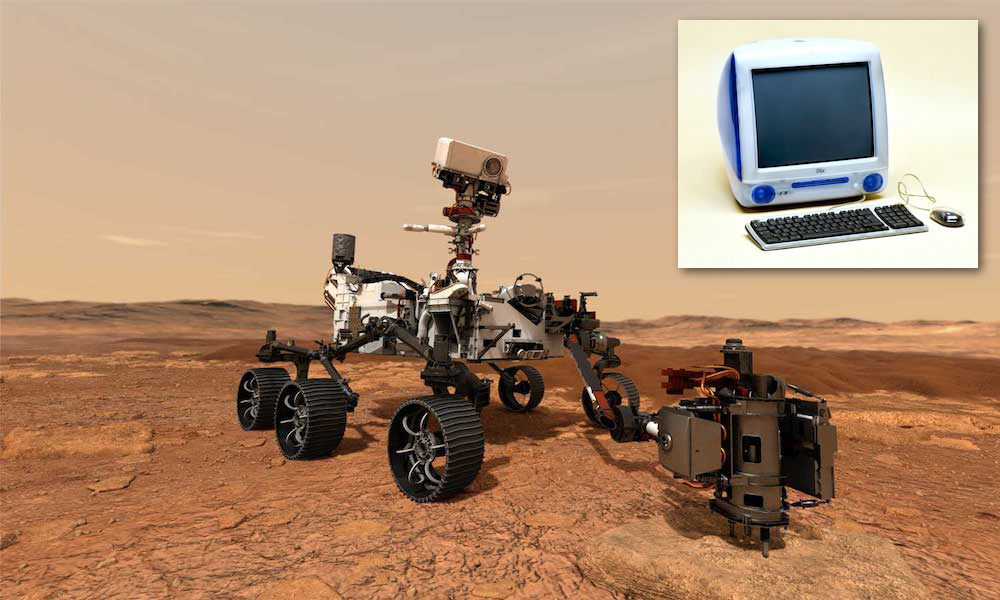NASA’s New Perseverance Rover Is Powered by 90s iMac G3 Hardware
 Credit: NASA / Photology1971 / Shutterstock
Credit: NASA / Photology1971 / Shutterstock
Toggle Dark Mode
The world was captivated last month when NASA landed another rover on Mars. The Perseverance Rover is filled with high-tech goodies, like the Mastcam-Z camera that can take 3D pictures and high-speed video. You would expect it to have a cutting-edge processor, but surprisingly that is not the case.
All of the rover’s processing power comes from a CPU that was originally released in the 1990s.
According to NewScientist, the Perseverance Rover is equipped with a PowerPC 750 processor. The name might sound familiar to you, and it should. The PowerPC 750 debuted in 1998 in Apple’s first iMac, the iMac G3.
The iMac G3 was the brainchild of Jony Ive, who broke the mold when he designed the colorful, see-through computer. Back then, the G3 was meant to be approachable to people who were afraid to use technology. Now, it is a cultural icon.
There is a crucial difference between the Rover’s RAD750 and Apple’s PowerPC 750. The RAD750 is designed to withstand harsh radiation between 200,000 to 1 million Rad and temperature ranges from -67 and 257 degrees Fahrenheit.
It also costs a whole lot more – each one sets NASA back a whopping $200,000.
NASA supposedly chose this processor not because it is old, but because it is reliable. The RAD750 has a proven track record in the aerospace field. It powered NASA’s Orion spacecraft and is the controller in approximately 100 satellites that provide imaging, GPS, weather, and military support. Not one of these processors has failed, said James LaRosa of BAE Systems, who spoke to NewScientist.






